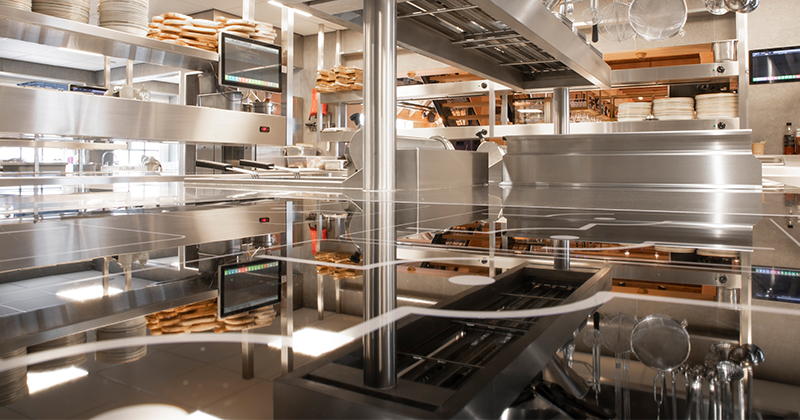Sustainable business
An electric-powered commercial kitchen is more sustainable than a gas-powered one. Electric stoves, such as induction, are not only more environmentally friendly, but also faster because the energy is transferred to the pan in a more targeted way than with gas stoves. This ensures higher efficiency with induction.
In addition, working in a kitchen without gas is safer for the chef and his team. There is less risk of burns and there are fewer harmful substances such as dust dioxide and ultrafine dust in the air. Indeed, these substances are bad for the airways of people exposed to them.
Cost-saving
The cost of gas as an energy source continues to rise. This is not only because of rising gas prices, but also because of the higher efficiency of induction compared to gas. With induction, there is 100% efficiency where with gas burners it is only 60%. This is because with gas, a lot of heat is lost, whereas with induction, all the heat goes directly to the pan without loss. While it is true that gas also transfers heat to the pan, not all the heat goes there. Due to the higher efficiency of induction, this type is both cost-effective and faster than cooking on gas.
With induction, heat is generated directly in the pan by electromagnetic coils, resulting in minimal heat losses. In contrast, gas burners involve heat loss through convection and radiation. By switching to induction, large kitchens can save significantly on energy costs, especially with intensive and prolonged use.
Induction hobs also have the advantage of fast warm-up times and immediate response to temperature adjustments. This is especially valuable in commercial kitchens, where timely preparation of food is essential. Induction’s ability to heat up quickly and distribute heat evenly reduces the cooking time of dishes. This not only results in cost savings through more efficient use of time and energy, but also increases overall productivity in the kitchen.
Less maintenance
Gas burners in commercial kitchens require regular professional maintenance to ensure that they operate safely and optimally. This includes cleaning and checking gas burners, checking gas pipes and maintaining ignition mechanisms. Gas burners in commercial kitchens require regular professional maintenance to ensure that they operate safely and optimally. This includes cleaning and checking gas burners, checking gas pipes and maintaining ignition mechanisms.
Ease of cleaning
Besides the cost-saving and durability benefits, cleaning an induction is also easier. With just three moves, an induction hob can be completely cleaned. Cleaning gas burners, on the other hand, is a lot more complicated because of all the nooks and crannies inside. This is not only pleasant for the chef and his team, but also saves time.
Heat in the kitchen is less
Induction gives off much less heat than gas hobs. This makes the temperature in the kitchen more comfortable. This affects not only lower costs but also a better working environment for people in the commercial kitchen. Combined with remote cooling, the temperature in the kitchen will decrease even more, making the working environment even better.
Induction gives off significantly less heat than gas burners. This makes the temperature in the kitchen feel more comfortable. This affects not only costs, but also the working environment for employees in the commercial kitchen. Combined with remote cooling, the temperature in the kitchen will be further reduced, further improving the working environment. SAAM Restaurant installed the cooling engines of their Qook! commercial kitchen remotely installed.
In conclusion, an all-electric kitchen is very interesting. Want to know more about Qook! kitchens or get expert advice?

